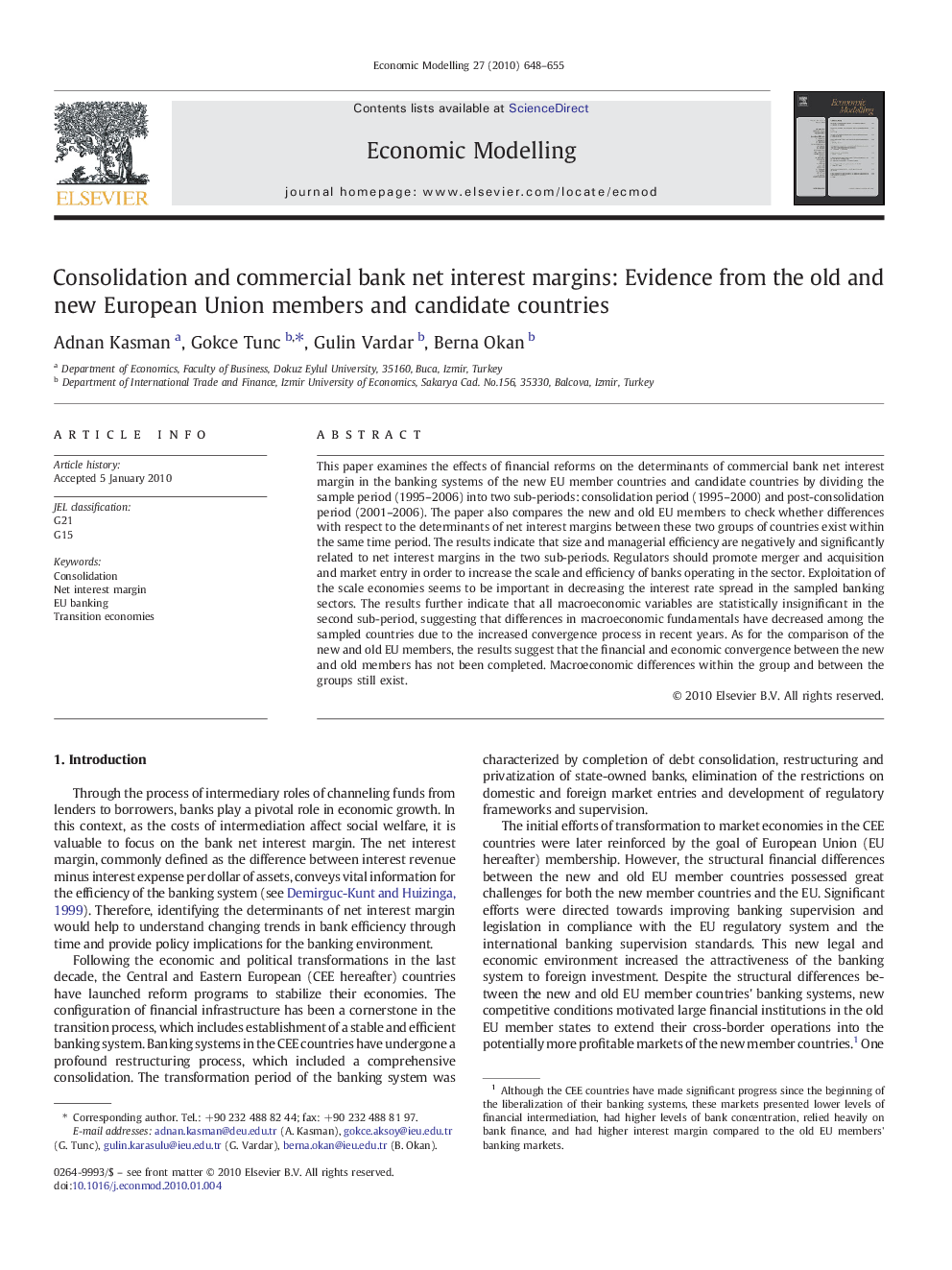ترجمه فارسی عنوان مقاله
حاشیه های سود خالص استحکام و بانک تجاری: شواهدی از اعضای قدیمی و جدید اتحادیه اروپا و کشورهای منتخب
عنوان انگلیسی
Consolidation and commercial bank net interest margins: Evidence from the old and new European Union members and candidate countries
| کد مقاله | سال انتشار | تعداد صفحات مقاله انگلیسی |
|---|---|---|
| 80039 | 2010 | 8 صفحه PDF |
منبع

Publisher : Elsevier - Science Direct (الزویر - ساینس دایرکت)
Journal : Economic Modelling, Volume 27, Issue 3, May 2010, Pages 648–655
ترجمه کلمات کلیدی
تثبیت؛ حاشیه سود خالص؛ بانکداری اتحادیه اروپا؛ اقتصادهای در حال گذار
کلمات کلیدی انگلیسی
G21; G15Consolidation; Net interest margin; EU banking; Transition economies

